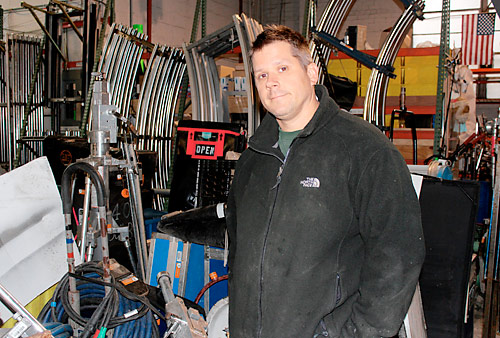Gowanus dwellers fear the floodwater that inundated their homes and businesses during Hurricane Sandy contained raw sewage, dangerous bacteria, and harmful toxins that puts their health at risk.
The notoriously filthy waterway topped its banks when the storm barreled through the borough, filling residences with several feet of water and leaving behind a noxious grime that coated floors, walls, and belongings throughout the neighborhood — and some residents worry the water damage is just beginning.
“I’m very concerned that there is all this bacteria in our house. We got nowhere to go,” said longtime Nevins Street resident Steve Wood, who tossed his hot water heaters, boilers, antique furniture, and irreplaceable family photos to the curb after nearly five feet of water flowed into his basement. “All the stuff is contaminated. I’m afraid of diseases. I don’t know what’s in that water.”
The Environmental Protection Agency drew two samples from the canal and two samples from the ground floors of Gowanus buildings that were flooded by the putrid waterway — which is so foul that federal authorities named it a Superfund site in 2010 — two days after the storm on Oct. 31.
The tests showed the floodwaters were low in gasoline and diesel derivatives as well as more than 100 other chemicals, toxic metals, and volatile organic compounds commonly found in the waterway — but the surge was exceedingly high in levels of bacteria.
“That certainly is a concern,” said Environmental Protection Agency regional administrator Judith Enck at a Nov. 26 community meeting.
Neighbors say that’s the understatement of the century.
“I don’t care what they found in those four samples of water — it’s not sufficient for me,” said Linda Mariano, who lives on President Street between Hoyt and Bond streets. “It’s a big wide area and it’s a Superfund site, that says it all.”
Some residents are wary to clean their basements after waters that reeked of raw sewage and rotten eggs hit their homes, and they’re fearful to touch the crud left behind by a sludgeway so filthy it has been found to contain gonorrhea.
“I know there is some bad stuff that flowed through here,” said Chris Hayes, who claims he lost millions when the storm hit the Douglas Street warehouse containing his company’s film equipment. “I’m concerned about my health. I don’t know what it’s doing to me.”
Federal authorities say Brooklynites should protect themselves when cleaning flooded dwellings by wearing rubber gloves, boots, and goggles — and the Environmental Protection Agency has even started distributing a handy, clip-art-adorned flier about how to get rid of mold, which the pamphlet claims “can make you sick.”
Fears about the flood’s health risks spread far past Gowanus.
Newtown Creek — the borough’s other horrifically dirty body of water — topped its banks and inundated parts of Greenpoint during the storm, though Port Authority tests revealed the flood didn’t bring the most-contaminated sludge from the bottom of the stream ashore, according to Assemblyman Joe Lentol (D–Greenpoint).
As is the case in Gowanus, some neighbors worry the initial testing wasn’t comprehensive enough. The Newtown Creek Alliance has hired its own independent tester to study the floodwaters in Greenpoint and expects to have results shortly.
“This is about informing ourselves for the next time this happens,” said Newtown Creek Alliance director Kate Zidar.
— with Danielle Furfaro


























